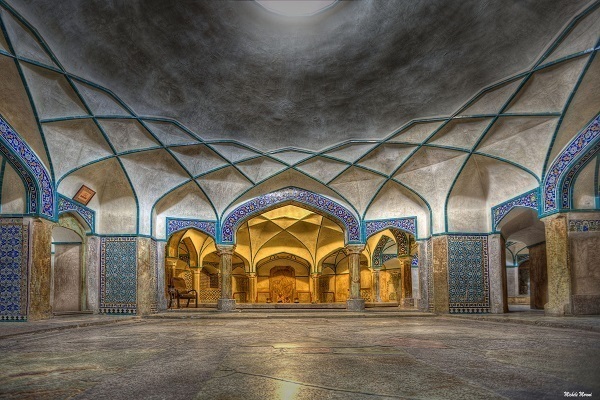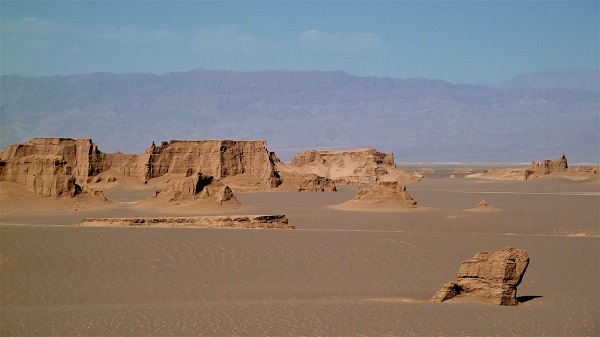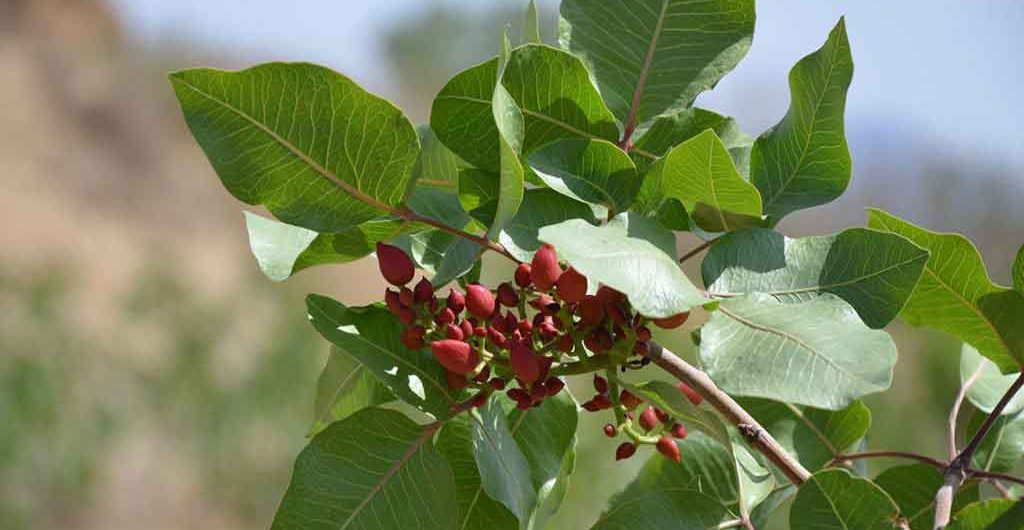Kerman
Kerman Province is the largest province in Iran in terms of area, located in the southeast of the country and the historic city center of Kerman is the 10th most populous in Iran. This desert city was founded in the 3rd century BC. by the first Sassanid monarch Ardashir I, it was one of the obligatory stops on the Silk Road, since it served as a perfect communication hub with the Indian subcontinent. Marco Polo passed through this city in 1271 and recorded the quality of the goods that were sold in the bazaars. Its economy is based on the cultivation of pistachios, the making of carpets and the extraction of minerals.
The northern part of the city is in a desert area, but the southern part has a more moderate climate. Many of the attractions of Kerman can be found in the city itself, but the landscape that surrounds the city is also captivating, with patches of desert and large mountains, which appear snowed for much of the year. Kerman has more than 600 historical monuments of which 6 are registered with UNESCO: Lut Desert, Garden of Prince Mahan, Bam, Meymand village, Ganjali Khan Ensemble and Qanat.
Ganjali Khan Ensemble and Bathhouse
This set includes one of the most interesting bazaars in Iran, a mosque, a caravanserai, tea houses and old bath, a magnificent building covered by beautiful tiles and paintings, currently it is an ethnological museum, built in 1631 on a rectangular plan similar to the one of mosques. The bath was built in 1611 under Ganjali Khan, the ruler of Kerman at the time. Indigo domes with marble borders, artistic paintings depicting everyday scenes of the time, arches and mannequins have made this bathroom one of the most beautiful in the world. Among the paintings we can see the important figures, animals, and soldiers below which poems are engraved in marble. The taps, the numerous fountains, the heating system and anti-seismic bathtubs are characteristics of this bathroom.

Moayedi Glacier
A semi-buried structure built in the 4th century BC. shaped like a cone that was used to store ice, and sometimes food. In Iran, Persian engineers already mastered the technique of storing ice in the middle of summer in the desert. The ice was brought in from the surrounding mountains in winter and then stored in glaciers called “Yakhchal” in Persian, which means “ice well”. Beneath the conical dome there is a large underground space surrounded by thick walls built with a mortar composed of sand, clay, egg white, lime, goat hair and ash in specific proportions.
Kaluts of Shahdad
One of the most historic cities in Iran, dating back to six thousand years ago. Of the wonders of Shahdad, it is enough to mention the first metal flags in the world, the city of the dwarves and their kaluts where an alien landscape stretches before our eyes. You can see the Tamaris and the Nebka of the Lut desert, which reach up to ten meters in height. The eastern side of the desert is a plateau covered with a layer of salt, while the central point of the desert is carved by the wind into a series of parallel ridges and channels that can reach a height of 70 meters. The term kalut is composed of the terms Lut (the Lut Desert) and Kal (city). Kalut is also known under the name Yardang, which means sand castle. In fact, the Kaluts are formations that have been created by the erosion of the wind, forming sand dunes in a thousand different ways. The term Yardang comes from Turkish. Dasht-e-Lut is included in the UNESCO list as a Natural Heritage of Humanity for being an Iranian nature landscape.

Prince Mahan’s Garden
The Prince’s Garden is located 2 km from Mahan City with hundreds of very old trees and streams of water creating a beautiful paradise in the desert. The garden was registered at UNESCO World Heritage site in 2011. The incomparable beauty of this garden attracts many tourists every year.

Arg-e Bam
The Bam, with an area of 180,000 square meters, is the largest mudbrick building in the world dating back to 600 BC. But after the 2003 Bam earthquake, during the restoration archaeologists found the excavations that date back to the second millennium BC.
The Bam citadel complex consists of houses, 67 castles and a large castle built in the middle, overlooking it all and its walls are about 6 to 7 meters high. There are 400 houses in this ancient citadel of 3 types; small houses with 2-3 rooms for low-class families, larger houses with 3-4 rooms for middle-class community, and luxurious large homes mostly belonged to the Jews. The last king of Zand was killed in this citadel in 1794.
Meymand Village
The historic village of Meymand is a full rocky handmade village with 3000 years of history, one of the earliest settlements of mankind. The primary inhabitants of the village delved into the mountain, formed houses out of rocks and settled in the heart of the mountain. The people of this village have not succeeded in making changes and have maintained their several thousand-year customs, so that the people of the village speak Old-Persian. actually, the lifestyle in this ancient village is very important tradition, Meymand rural district consists of three areas close to each other where people live according to each season, a rocky village is used when the cold season begins and consists of over 400 hand-made houses.
Meimand Rocky Mountain Village was recognized as a UNESCO World Heritage Site in July 2015.



Comments